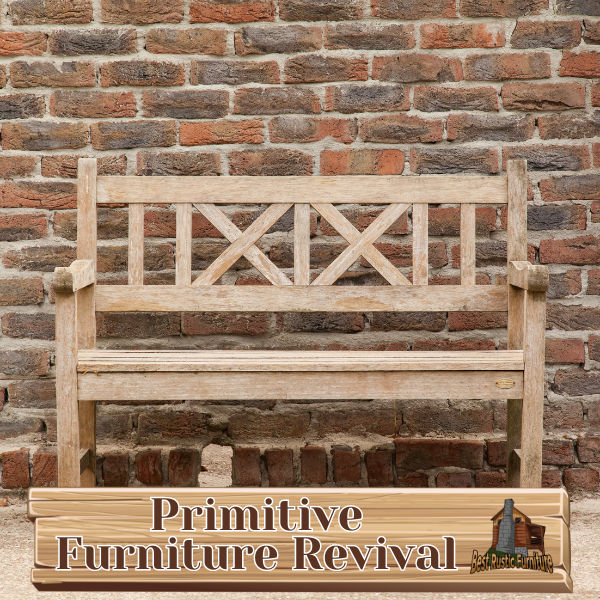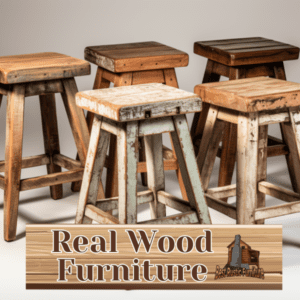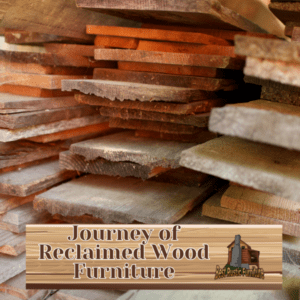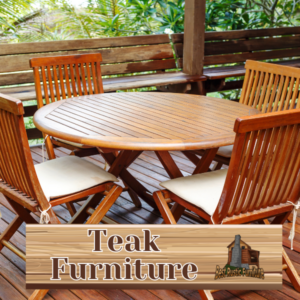
Primitive furniture, with its rustic charm and timeless appeal, has experienced a revival in recent years. This article delves into the journey back in time to explore the world of primitive furniture and its resurgence in popularity.
What defines primitive furniture?
Primitive furniture is characterized by its simplicity, functionality, and handmade quality. These pieces are often crafted using natural materials such as wood, showcasing the craftsmanship and techniques of earlier times.
The historical background of primitive furniture:
Primitive furniture has its roots in the early American settlers and pioneers who created pieces out of necessity and resourcefulness. These simple and utilitarian designs were prevalent during the colonial and frontier eras, serving as a reflection of the lifestyle and values of those times.
Why has primitive furniture regained popularity?
In a world filled with mass-produced furniture, primitive pieces offer a sense of authenticity and uniqueness. They bring a touch of nostalgia and warmth to modern interiors, providing a counterbalance to the sleek and contemporary designs that dominate today’s trends.
Features of primitive furniture:
- Simplicity and minimalism: Primitive furniture embraces clean lines and functional designs, avoiding excessive ornamentation.
- Use of natural materials: Wood is the primary material used, highlighting its organic beauty and durability.
- Distressed finishes: The intentional wear and distressed finishes provide a vintage and weathered look, adding character and charm to each piece.
- Handcrafted techniques: Primitive furniture is often handmade using traditional joinery and woodworking methods, showcasing the craftsmanship of earlier times.
The aesthetics of primitive furniture:
- Warmth and coziness: Primitive furniture creates a cozy and inviting atmosphere with its natural materials and warm color tones.
- Rustic charm and nostalgia: These pieces evoke a sense of history and nostalgia, connecting us to simpler times and a slower-paced lifestyle.
- Uniqueness and individuality: Each primitive piece is unique, carrying its own story and character, making it a standout feature in any space.
How to incorporate primitive furniture in modern interiors:
- Pairing primitive furniture with contemporary pieces creates an interesting contrast and adds depth to the overall design.
- Creating a focal point with primitive furniture draws attention and becomes the centerpiece of a room.
- Adding texture and contrast through the use of primitive furniture enhances visual interest and creates a layered and inviting space.
Popular types of primitive furniture:
- Primitive tables: These tables often feature sturdy construction, simple lines, and functional designs for everyday use.
- Primitive chairs and benches: These seating options showcase the humble and straightforward aesthetics of primitive furniture.
- Primitive cabinets and storage: These furniture pieces provide ample storage space while maintaining the rustic and charming appeal of primitive style.
- Primitive decorative accessories: Primitive decor accessories like wooden bowls, handmade textiles, and folk art add a touch of authenticity and history to a space.
Where to find and purchase primitive furniture:
- Antique stores and vintage markets offer a wide selection of authentic primitive pieces with a sense of history.
- Online marketplaces and auctions provide opportunities to discover unique and rare finds from different locations.
- Custom-made primitive furniture allows for personalized designs that align with individual preferences and style.
The timeless appeal of primitive furniture lies in its ability to evoke a sense of nostalgia, its craftsmanship, and the warmth it brings to modern interiors. By incorporating these rustic and charming pieces, one can create a unique and inviting space that celebrates the rich history of furniture design.
“
Key takeaway:
- Primitive furniture is defined by simplicity and minimalism: The revival of primitive furniture showcases its appeal as a design style that emphasizes clean lines and unadorned aesthetics, bringing a sense of calmness and tranquility to modern interiors.
- Natural materials and distressed finishes lend authenticity to primitive furniture: The use of materials like wood, linen, and metal, along with weathered, worn, or aged finishes, adds character and charm to primitive furniture, evoking a sense of nostalgia and history.
- Primitive furniture adds warmth and personality to modern interiors: By incorporating primitive furniture into contemporary spaces, homeowners can create a rich and welcoming ambiance, combining rustic charm with curated pieces that tell a unique story.
The Primitive Furniture Revival: Exploring a Journey Back in Time
The Primitive Furniture Revival: Exploring a Journey Back in Time
The primitive furniture revival is a captivating trend that takes us on a nostalgic journey back in time. This authentic and historic style embraces the use of rustic, handcrafted pieces, often made from reclaimed or natural materials. Its charm lies in the simplicity and functionality of the design, paying homage to the past.
When you incorporate primitive furniture into your home, you not only add a unique touch but also connect with the stories that each piece carries. Allow me to share a true anecdote that beautifully captures the essence of this revival:
During a visit to a flea market, I chanced upon a worn and weathered old chest. As I cautiously opened it, a handwritten note from the early 1900s gracefully fell out, recounting the chest’s remarkable journey through generations of a family. Once used for storing linens and clothes, this chest now proudly resides in my living room, serving as both a testament to the primitive furniture revival and a cherished piece of our history.
What Defines Primitive Furniture?
Primitive furniture is defined by its simplicity, use of natural materials, distressed finishes, and handcrafted techniques. It harkens back to a time when furniture was functional and made without the use of modern machinery. The focus is on showcasing the beauty of the wood and craftsmanship. Primitive furniture has regained popularity due to its warm and cozy aesthetic, rustic charm, and unique appeal. To incorporate primitive furniture in modern interiors, it can be paired with contemporary pieces to create a contrast. Popular types include tables, chairs, benches, cabinets, and decorative accessories. Antique stores, vintage markets, and online marketplaces are great places to find and purchase primitive furniture. What clearly defines primitive furniture is its simplicity, use of natural materials, distressed finishes, and handcrafted techniques. This type of furniture takes us back to a time when functionality was the priority and modern machinery did not exist. The focus is on the natural beauty of the wood and the skilled craftsmanship. In today’s interior design, primitive furniture is gaining popularity again for its warm and cozy aesthetic, along with its rustic charm and unique appeal. To incorporate primitive furniture into modern spaces, it can be artfully paired with contemporary pieces to create an interesting contrast. The most common types of primitive furniture include tables, chairs, benches, cabinets, and decorative accessories. To find and buy primitive furniture, one can visit antique stores, vintage markets, and online marketplaces where such pieces are commonly available.
Historical Background of Primitive Furniture
Primitive furniture has a rich historical background that dates back to early American settlers. The Historical Background of Primitive Furniture shows that it originated from the need for functional, simple, and handcrafted furniture during colonial times. The historical background of primitive furniture is characterized by its rustic and utilitarian nature, using natural materials like wood and simple handcrafted techniques. The simplicity and minimalism of primitive furniture reflect the lifestyle of early settlers and evoke a sense of nostalgia and charm. Today, the Historical Background of Primitive Furniture has contributed to its revival and popularity, as people appreciate its timeless appeal and connection to the past.
Why Has Primitive Furniture Regained Popularity?
The resurgence in popularity of primitive furniture can be attributed to several factors. One reason is that it offers homeowners a unique and distinctive aesthetic that stands out in modern interiors. Its simplicity, use of natural materials, and distressed finishes contribute to creating a warm and rustic charm, evoking a sense of nostalgia. Furthermore, primitive furniture aligns with the current trend of minimalism, providing a much-needed break from the sleek and uniform styles commonly found in contemporary design. Additionally, the resurgence of vintage and antique trends plays a significant role in the increased popularity of primitive furniture. People appreciate the authenticity and craftsmanship of handcrafted primitive pieces, adding to their appeal. Ultimately, the timeless and individualistic charm of primitive furniture is the key reason behind its regained popularity.
Features of Primitive Furniture
Uncovering the allure of primitive furniture, we dive into the captivating features that make it truly distinctive. From the elegance of simplicity and minimalism to the raw beauty of handcrafted techniques, each sub-section unveils a remarkable facet of this revival. Discover how the usage of natural materials and the richness of distressed finishes add character and charm to these timeless pieces. Prepare to embark on a captivating journey through the captivating world of primitive furniture.
Simplicity and Minimalism
One of the defining characteristics of primitive furniture is its simplicity and minimalism. It encompasses a back-to-basics approach that emphasizes functionality and purpose rather than ornate decorations.
- Straight lines and clean shapes: Primitive furniture typically showcases straight lines and clean shapes, avoiding intricate carvings or embellishments.
- Raw and natural materials: The utilization of raw and natural materials, such as wood or metal, further accentuates the simplicity and minimalism of primitive furniture.
- Functional design: Every aspect of primitive furniture serves a purpose, with a focus on practicality and usability.
- Unpretentious finishes: Primitive furniture often displays unpretentious finishes, such as distressed or weathered surfaces, contributing to its rustic appeal.
- No-frills aesthetics: The overall aesthetic of primitive furniture is unadorned, prioritizing function over decorative details.
Use of Natural Materials
The use of natural materials is a key characteristic of primitive furniture. These materials not only contribute to the authenticity and charm of the pieces but also enhance their durability and sustainability.
- Wood: Most primitive furniture is crafted from solid wood, such as oak, pine, or cherry. These natural materials beautifully showcase the unique grain patterns and provide a strong foundation.
- Rattan and Wicker: These natural fibers are commonly utilized in the construction of chairs, benches, and other seating pieces. They introduce a touch of texture and create a rustic, handmade aesthetic.
- Leather: Primitive furniture may incorporate natural leather upholstery or accents, which add a warm and rich element to the overall design.
- Metal: While wood is the predominant material, primitive furniture occasionally incorporates wrought iron or other metals in the form of decorative accents or hardware.
When incorporating primitive furniture into modern interiors, it is important to consider the natural materials used in the rest of the space. For example, you can pair a primitive wooden table with a natural jute rug or introduce leather seating to complement the warm tones of the rustic pieces. By incorporating elements that align with the use of natural materials in primitive furniture, you can achieve a cohesive and harmonious design.
Distressed Finishes
Distressed Finishes are an essential component of primitive furniture that adds character and imparts an antique look to the pieces. Achieving these finishes involves using various techniques to artificially age the wood, such as sanding, distressing, or applying multiple layers of paint. The result is furniture with a worn and weathered appearance, evoking a sense of history and nostalgia. The popularity of Distressed Finishes stems from their ability to infuse warmth and charm into any space. To create a cohesive and balanced design when incorporating primitive furniture with Distressed Finishes into your home, it is advisable to incorporate some modern elements as well, following this pro-tip.
Handcrafted Techniques
Handcrafted techniques are essential in the creation of primitive furniture, playing a vital role in the process. These techniques require skilled craftsmanship and meticulous attention to detail. The following steps outline the handcrafting process for primitive furniture:
| – Selecting and preparing the wood: | The initial step involves carefully selecting the appropriate type of wood for the furniture piece and preparing it meticulously by sanding and smoothing the surface. |
| – Joinery: | Traditional joinery techniques such as mortise and tenon or dovetail joints are commonly employed in handcrafted furniture to ensure robust and sturdy construction. |
| – Hand carving and shaping: | Highly skilled artisans utilize hand tools to intricately carve and shape the wood, adding exquisite details and decorative elements to the furniture piece. |
| – Hand-applied finishes: | Primitive furniture often exhibits distressed or weathered finishes, which are achieved through meticulous hand painting, staining, or aging techniques. |
| – Final assembly: | With all the individual components completed, the furniture is assembled with great care, ensuring a proper fit and alignment. |
These handcrafted techniques contribute significantly to the charm and authenticity of primitive furniture, resulting in each piece being truly unique and special.
The Aesthetics of Primitive Furniture
Step into a world where warmth, rustic charm, and uniqueness converge – the aesthetics of primitive furniture. Immerse yourself in the sub-sections that unravel the allure of this time-honored tradition: experience the cozy embrace of warmth, relish in the nostalgic and rustic charm, and discover the allure of individuality through the intricate designs. Prepare to be captivated by the beauty that lies within the realm of primitive furniture.
Warmth and Coziness
Primitive furniture is renowned for its warmth and coziness, making it a popular choice for those seeking a nostalgic and inviting atmosphere in their homes.
- Use warm colors: Infuse your space with earthy tones like browns, reds, and oranges to create an ambiance that is both cozy and inviting.
- Add soft textures: Enhance the feeling of comfort by incorporating plush cushions, cozy throws, and soft rugs.
- Choose rustic materials: Opt for natural materials such as wood, wicker, and rattan to bring a warm and organic touch to the space.
- Embrace imperfect finishes: Distressed and worn finishes add character and a sense of history to primitive furniture.
By incorporating these elements into your space, you can achieve an atmosphere that exudes warmth and coziness, reminiscent of a simpler time.
Rustic Charm and Nostalgia
Rustic charm and nostalgia are the defining characteristics of primitive furniture, lending a unique and timeless appeal to any space.
- Warmth and Coziness: Primitive furniture creates a cozy and inviting atmosphere, evoking feelings of comfort and relaxation.
- Rustic Charm: The weathered and distressed finishes of primitive furniture exude a rustic charm, bringing a sense of history and authenticity to a room.
- Nostalgia: Embracing primitive furniture allows for a touch of nostalgia, recalling simpler times and a connection to the past.
Uniqueness and Individuality
Primitive furniture is renowned for its uniqueness and individuality, making it a favored option for those desiring a distinct appeal in their homes. With its handcrafted techniques and use of natural materials, each piece of primitive furniture possesses its own character and narrative. Whether you choose a rustic farmhouse table or a timeworn cabinet, these items infuse warmth and charm into any space. To seamlessly incorporate primitive furniture into modern interiors, consider pairing it with contemporary pieces to create a captivating juxtaposition. Antique stores, vintage markets, and online marketplaces serve as excellent sources to discover and purchase primitive furniture that truly embodies this sense of individuality.
How to Incorporate Primitive Furniture in Modern Interiors
Looking to bring a touch of nostalgia and character to your modern interiors? Look no further than the world of primitive furniture. In this section, we’ll explore creative ways to incorporate primitive furniture into your contemporary spaces. From pairing it with sleek and stylish contemporary pieces to creating captivating focal points, and adding texture and contrast, we’ll show you how you can infuse the charm of primitive furniture into your modern aesthetic. Get ready to take a journey back in time while embracing the present.
Pairing Primitive Furniture with Contemporary Pieces
Pairing Primitive Furniture with Contemporary Pieces can result in a captivating and visually enticing interior design. Achieving a harmonious blend of old and new can be done in the following ways:
- Contrast Materials: Combine the rustic textures of Primitive Furniture with sleek, modern materials such as glass or metal.
- Color Balance: Opt for a neutral or monochromatic color palette to bring together the different styles and establish a cohesive aesthetic.
- Balance Scale: Take into account the proportions of the furniture pieces and strive for a well-balanced arrangement that allows each piece to showcase its uniqueness.
- Highlight Statement Pieces: Utilize Primitive Furniture as focal points in the room and complement them with contemporary accessories or artwork.
- Mix and Match: Experiment with the amalgamation of different styles and eras to curate an eclectic and personalized space.
By thoughtfully selecting and blending Primitive and Contemporary Furniture, you can fashion a space that is truly unparalleled, reflecting your individual style and evoking a timeless charm.
Creating a Focal Point with Primitive Furniture
- Creating a focal point with primitive furniture can add character and interest to any space. Here are some ways to achieve this:
- Place a large primitive cabinet or hutch against a blank wall to draw attention and provide storage.
- Use a primitive table with unique detailing as a centerpiece in a dining area or as a statement piece in a living room.
- Hang an eye-catching primitive mirror or artwork on a focal wall to create visual interest.
- Add a rustic and distressed primitive bench or chair to an entryway or hallway to make a bold statement.
Fun Fact: Primitive furniture, created by early settlers using simple tools and techniques, enables creating a focal point with character and interest in any space. Implement the following ideas to achieve this:
Adding Texture and Contrast
When incorporating primitive furniture into modern interiors, adding texture and contrast can enhance the overall aesthetic. Here are some steps to achieve this:
- Combine different materials: Pair rustic wood elements with smooth surfaces, such as metal or glass, to create a contrasting look.
- Play with patterns: Introduce textiles with bold patterns or textures, like woven rugs or embroidered pillows, to add visual interest.
- Mix old and new: Blend primitive furniture with contemporary pieces to create a juxtaposition of styles and textures.
- Use contrasting colors: Choose colors that complement each other but also provide contrast, such as pairing warm tones with cool hues.
Fun Fact: Incorporating texture and contrast in interior design not only adds visual appeal but also creates a more dynamic and layered space.
Popular Types of Primitive Furniture
Get ready to delve into the captivating world of primitive furniture! In this section, we’ll uncover the allure of popular types of primitive furniture, including primitive tables, chairs, benches, cabinets, storage, and decorative accessories. From rustic charm to timeless craftsmanship, each sub-section will unveil the unique characteristics and appeal of these pieces. So, buckle up and join us on this fascinating journey back in time, as we explore the revival of primitive furniture!
Primitive Tables
Primitive Tables are an essential element of primitive furniture, renowned for their uncomplicated design and practicality. These tables are typically meticulously handcrafted using organic materials such as wood and feature worn-out finishes to achieve a charmingly rustic appearance. They are available in various styles, including farmhouse, trestle, and harvest tables. Primitive tables serve as captivating focal points in rustic or farmhouse-style interiors and can be effortlessly combined with contemporary pieces to create a distinctive fusion of tradition and modernity. These captivating tables can be discovered in antique stores, vintage markets, and online platforms. It is worth mentioning that primitive tables often have a fascinating history that showcases the exquisite craftsmanship of previous generations.
Primitive Chairs and Benches
Primitive chairs and benches are essential furniture pieces that exude a rustic and nostalgic charm in any space.
- Types of Primitive Chairs and Benches: These include ladderback chairs, Windsor chairs, and sack-back chairs, which feature simple and sturdy designs.
- Characteristics: Primitive chairs and benches are often made from natural materials like wood or wicker, showcasing their craftsmanship and simplicity.
- Distressed Finishes: These primitive chairs and benches are typically finished with distressed paint or stains to achieve an aged and weathered look.
- Functional and Versatile: Primitive chairs and benches serve both practical and decorative purposes, providing comfortable seating options in dining areas or as accent pieces in living rooms or entryways.
- Pairing Options: Pairing primitive chairs and benches with other primitive furniture or incorporating them into a modern interior can create a unique and eclectic aesthetic.
Primitive Cabinets and Storage
- Primitive cabinets and storage are essential pieces of furniture that add functionality and rustic charm to any space. When incorporating primitive cabinets and storage into your home, consider the following options and features:
- Primitive cupboards: These cabinets often feature simple designs with sturdy construction. They provide ample storage space for kitchen utensils, dishes, or pantry items.
- Primitive chests: Perfect for storing blankets, linens, or clothing, these chests typically have a distressed finish and handcrafted details.
- Primitive armoires: These larger cabinets offer storage for clothing, while also adding character to bedrooms or living rooms. Many feature decorative details and unique hardware.
- Primitive shelves: Simple and functional, these shelves are ideal for displaying collectibles or storing everyday items in an organized manner.
By incorporating primitive cabinets and storage into your home, you can create a charming and functional space with a touch of nostalgic appeal.
Primitive Decorative Accessories
Primitive Decorative Accessories are essential elements for achieving an authentic primitive furniture look. These accessories effortlessly infuse charm and character into any space. Incorporate the following popular primitive decorative accessories into your interior design to elevate its appeal:
- Primitive wooden signs: Enhance the rustic charm of your walls with these signs featuring sayings or quotes.
- Primitive textiles: Embrace the warmth and texture in your space by incorporating handmade quilts, rag rugs, and primitive-style curtains.
- Primitive lighting: Bring a historic touch to your lighting fixtures using wrought iron or tin chandeliers, lanterns, or candlesticks.
- Primitive ceramics and pottery: Add an authentic feel to your primitive decor by displaying handmade pottery or antique crockery.
- Primitive wall art: Evoke a sense of nostalgia by hanging antique oil paintings, folk art, or primitive-style prints on your walls.
With these Primitive Decorative Accessories, you can effortlessly transform your space into a charming and cozy primitive haven.
Where to Find and Purchase Primitive Furniture
If you’re on a quest for one-of-a-kind treasures and a touch of history, you’ll want to dive into the fascinating world of primitive furniture. In this section, we’ll guide you through the exciting avenues that lead to finding and purchasing these timeless pieces. From the hidden gems waiting at antique stores and vintage markets to the convenience of online marketplaces and auctions, we’ll show you where to uncover these rare finds. And for those seeking something truly unique, we’ll explore the realm of custom-made primitive furniture. Get ready to embark on a journey of discovery!
Antique Stores and Vintage Markets
Finding unique and authentic antique furniture at antique stores and vintage markets can be an exhilarating treasure hunt. These remarkable places present a vast selection of vintage and antique pieces that carry a rich history and captivating stories. To make the most out of your experience, consider the following tips:
| Prior to your visit, conduct thorough research to familiarize yourself with the different types of antique furniture that pique your interest. | Take your time to explore the variety of booths and stalls available, as each one offers a distinctive collection. | Closely examine the furniture for any damages or signs of wear, as these imperfections can enhance the charm and authenticity of the pieces. | If possible, inquire with the sellers about the history and provenance of the items to gain insight into their origins. | Keep in mind that bargaining and negotiating prices are customary practices at antique stores and vintage markets. So, feel free to engage in this process. |
Immerse yourself in the abundant history and sentimental value that antique stores and vintage markets have to offer. In addition to discovering extraordinary pieces of antique furniture, these extraordinary places allow you to forge a connection with the past and imbue your home with a timeless allure.
Online Marketplaces and Auctions
When looking to purchase primitive furniture, online marketplaces and auctions provide a convenient and wide range of options. Here are a few reasons why these platforms, such as online marketplaces and auctions, are beneficial:
- Access to a variety of sellers offering different styles and pieces on online marketplaces and auctions
- Ability to compare prices and find competitive deals through online marketplaces and auctions
- Convenience of shopping from the comfort of your own home using online marketplaces and auctions
- Opportunity to discover unique and one-of-a-kind pieces on online marketplaces and auctions
- Possible chance to bid on items and potentially get them at a lower price through online marketplaces and auctions
Always ensure that you research the seller’s reputation and read reviews before making a purchase from online marketplaces and auctions. Consider shipping costs and return policies when buying from online marketplaces and auctions.
Custom-Made Primitive Furniture
Custom-made primitive furniture adds a unique and personalized touch to your home decor. When considering the custom-made options, here are some factors to keep in mind:
- Design: Collaborate with a skilled craftsman to create a design that perfectly suits your taste and requirements.
- Materials: Choose high-quality wood and natural materials to maintain the rustic charm and authenticity of primitive furniture.
- Customization: Have the opportunity to customize the dimensions, finishes, and details of the furniture to match your space and style.
- Functionality: Ensure that the custom-made piece is not only visually appealing but also functional and practical for everyday use.
- Expertise: Check the craftsman’s portfolio and customer reviews to ensure they have the expertise and experience in creating custom-made primitive furniture.
The Timeless Appeal of Primitive Furniture
Primitive furniture has a timeless appeal that continues to captivate people today. The rustic charm of these pieces creates a warm and inviting atmosphere in any space. The simplicity and craftsmanship of primitive furniture exemplify a connection to nature and a simpler way of life. With their handcrafted details and natural materials, pieces such as wooden benches, hand-carved tables, and handmade chairs add a touch of authenticity to any room. The timeless appeal of primitive furniture lies in its ability to bring a sense of history and nostalgia to modern interiors. The enduring allure of primitive furniture underscores its timeless nature and continues to captivate people even today.
Some Facts About Journey Back in Time: The Primitive Furniture Revival:
- ✅ The Journey Back in Time database offers access to primary source materials online, covering 400 years of American history. (Source: Our Team)
- ✅ The database includes tens of thousands of newspaper articles, rare books, videos, illustrations, photos, maps, and documents. (Source: Our Team)
- ✅ Users can browse through thousands of original articles in the Time Vault, providing a glimpse into the past. (Source: Our Team)
- ✅ The Rare Book Room offers chapters from old volumes, allowing users to delve into historical texts. (Source: Our Team)
- ✅ Subscribers can create lesson plans using the primary resources available in the Time Vault, enhancing the learning experience for students. (Source: Our Team)
Frequently Asked Questions
How can I quickly remove glue from my wooden furniture?
You can use an orange-based cleaner or orange peels to dissolve glue on solid wood furniture. Rub the orange peel onto the adhesive stain and let it sit for 15 minutes before wiping it clean with a rag.
What is the recommended method for removing adhesive left behind from stickers?
Rubbing alcohol is effective for removing adhesive left behind from stickers. Soak a cotton ball with rubbing alcohol and rub it in a circular motion until the stain is gone.
Can dish soap be used to clean solid wood furniture with a heavy surface finish?
Yes, dish soap can be used on solid wood furniture with a heavy surface finish. Mix dish detergent with warm water, apply it to the adhesive, and rinse with a damp cloth. Note that you should use a gentle dish detergent for hand-washing dishes, not dishwasher detergent.
How can I remove adhesive from finished wood surfaces?
Petroleum jelly can be used on finished wood surfaces. Apply petroleum jelly and let it sit for several hours to loosen the adhesive. Afterward, rub the adhesive away with a clean cloth.
How do I subscribe to the Journey Back in Time database?
To subscribe to the Journey Back in Time database, simply visit their website and follow the instructions to sign up. Once subscribed, you will gain access to a wealth of primary source materials spanning 400 years of American history, including newspaper articles, rare books, videos, illustrations, photos, maps, and documents.
What can I do with the primary resources available in the Journey Back in Time database?
The primary resources available in the Journey Back in Time database can be used for various purposes. You can explore the Time Vault to browse through thousands of original articles and gain a glimpse into the past. The Rare Book Room offers chapters from old volumes for a unique opportunity to delve into historical texts. You can also create your own lesson plans using the primary resources in the Time Vault, which is especially useful for educators looking to incorporate historical materials into their teaching. Additionally, the database provides the Dictionary of Historical Terms for helpful definitions related to history.






